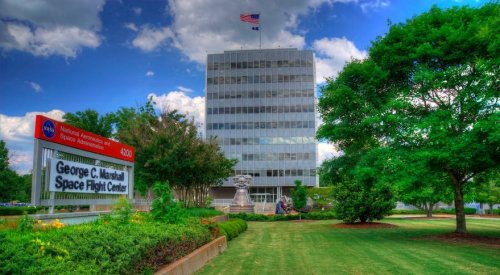WASHINGTON — NASA is finalizing a plan to gradually reopen its field centers once the peak of the coronavirus pandemic passes, but agency leadership said that would be a slow process that would vary based on the conditions at each center.
During an online town hall meeting broadcast on NASA TV May 6, NASA Administrator Jim Bridenstine and other officials discussed their efforts to finalize guidelines that would allow NASA centers to gradually resume normal operations in the months to come, but with many employees continuing to telework for the foreseeable future.
“I want to make sure that everybody at NASA understands what our number one highest priority is, and that is keeping you safe,” Bridenstine said.
In the last two months, all of NASA’s 18 facilities, which include its 10 field centers, NASA Headquarters, and other locations run by field centers, have moved to Stage 3 or Stage 4 of its pandemic response plan. That requires mandatory telework except for those working on essential activities or safety and security of the facilities themselves.
NASA published this week a “Framework for Return to On-Site Work,” a diagram that describes how NASA will gradually move back to normal operations. For example, a move from Stage 4, where 12 NASA facilities are at, to Stage 3 requires a downward trajectory of both COVID-19 cases and other “influenza-like illnesses” over a 14-day period.
“We tried to give the center directors a solid framework, but really allow them to make the best plans based on their and their leadership teams’ knowledge of people and facilities at each location,” said Jim Morhard, NASA deputy administrator. “We’ve tried to lay out guidelines and considerations that anticipate really an evolving situation and allow for dynamic plans that tolerate changing conditions.”
Morhard said that approach would allow a “phased and gradual return to work” at centers, starting with those people who need to work on-site for mission-critical projects. However, telework for those who can work remotely is likely to remain in place for some time, in part because of concerns about the inability to maintain social distancing in an office environment.
“We are going to continue to use telework to a large extent,” said NASA Associate Administrator Steve Jurczyk, who estimated that 90% of agency employees were working remotely. He said the centers will later have to look at how to change office environments to allow the safe return of those employees.
“If you can do all of your work via telework, we would expect you to do all of your work via telework,” Bridenstine said. “The returning to work implementation is going to be based on work that absolutely has to be done on site.”
Centers will make decisions on reopening based on local conditions, Bridenstine said, with any local or state stay-at-home orders overriding federal guidelines. “We will follow the most conservative path to make sure we are as safe as possible for our employees,” he said. “Whatever guidance that is most stringent is the one that we will follow.”
Questions that NASA employees submitted for the town hall raised a wide range of issues about reopening centers, from availability of personal protective equipment for those returning to work to access to child care. Some questioned why NASA was even considering a partial reopening given the number of cases of, and deaths caused by, COVID-19 nationwide.
“We are not rushing to open. We are rushing to plan,” Morhard said. “We have to establish and implement the proper precautions now to make sure the work environment is safe when you do get back and remains safe in the new ways we’ll work in the future.”
Another issue was a possibility of a second wave of the pandemic later this year, something that many public health experts have warned is likely. While NASA shut down entire centers once cases of COVID-19 were diagnosed among employees, or because of community transmission of the disease, agency officials suggested they would take a more targeted approach during any later wave.
“We would not close a center for a single case,” Jurczyk said. Instead, the center would close the building or buildings where that person worked for cleaning, and also perform contract tracing to identify those individuals who had been in proximity of that person.
“I don’t think that anybody is impatient,” Bridenstine said of reopening NASA centers. “The question is, how do we go back to work now that we know that coronavirus pandemic is better understood now than it was previously?”
- NASA looking to play greater role in coronavirus pandemic response
- Coronavirus updates: The latest COVID-19 news for the global space industry
- More NASA centers shift to mandatory telework
- NASA Marshall shifts to telework after coronavirus case
- Why Sierra Nevada’s owners are betting big on Dream Chaser
Share with your friends

(0) Comments
This article comments are currently no :(